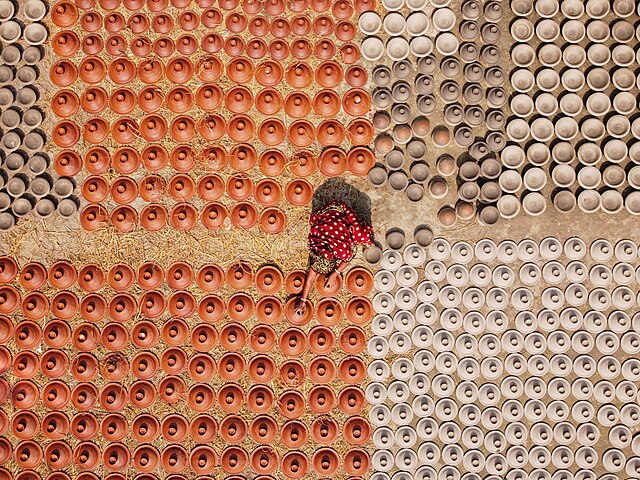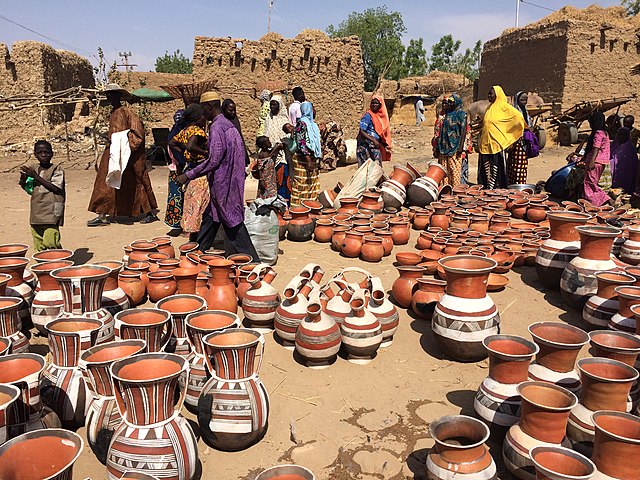Soft-paste porcelain is a type of ceramic material in pottery, usually accepted as a type of porcelain. It is weaker than "true" hard-paste porcelain, and does not require either its high firing temperatures or special mineral ingredients. There are many types, using a range of materials. The material originated in the attempts by many European potters to replicate hard-paste Chinese export porcelain, especially in the 18th century, and the best versions match hard-paste in whiteness and translucency, but not in strength. But the look and feel of the material can be highly attractive, and it can take painted decoration very well.
Capodimonte porcelain soft-paste jar with three figures of Pulcinella from the commedia dell'arte, 1745–1750
Chelsea porcelain, England, about 1765. Soft-paste decorated in enamel colours with a gold anchor mark. V&A Museum no. 528-1902 Victoria and Albert Museum, London
Saint-Cloud manufactory soft porcelain bowl, with blue decoration under glaze, 1700–1710.
Saint-Cloud manufactory soft porcelain vase, with blue designs under glaze, 1695–1700.
Pottery is the process and the products of forming vessels and other objects with clay and other raw materials, which are fired at high temperatures to give them a hard and durable form. The place where such wares are made by a potter is also called a pottery. The definition of pottery, used by the ASTM International, is "all fired ceramic wares that contain clay when formed, except technical, structural, and refractory products". End applications include tableware, decorative ware, sanitary ware, and in technology and industry such as electrical insulators and laboratory ware. In art history and archaeology, especially of ancient and prehistoric periods, pottery often means vessels only, and sculpted figurines of the same material are called terracottas.
Hand building a jar.
Finished pottery products kept for drying in the sun.
An 18th-century Chinese export porcelain service, for the America market
The pottery market in Boubon, Niger.








